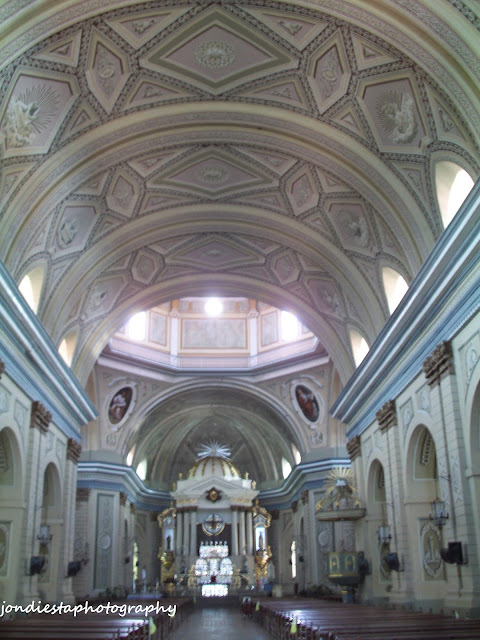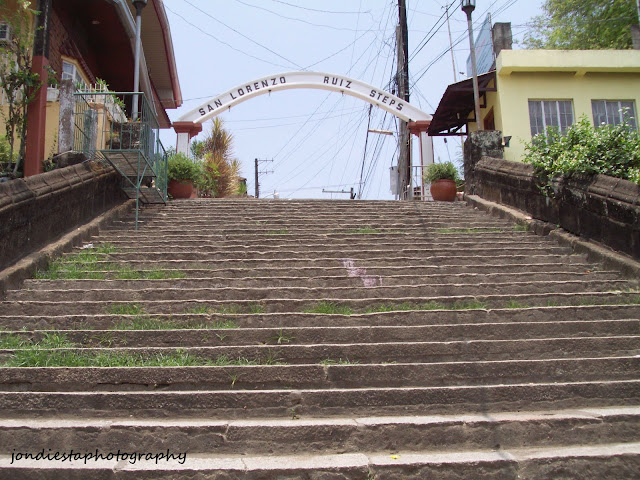My family and I got back from our trip to Palawan last year where we visit some of the tourist spots in Puerto Princesa City including Honda Bay. It is a perfect place for island hopping because the exotic and peculiar features of the islets and the panoramic view of the bay makes the tour more exciting. In addition, it is an ideal venue for snorkeling because of the abundance of marine creatures from shallow reefs to the deeper parts of the bay.
 |
| The shore of Starfish Island. |
There is an island in Honda Bay where you can see a lot of stars. If you want to know about it, you can go to Starfish Island. You can travel there through boat, many less than twenty to forty-five minutes from the shore to the island. Boats can be rented in Sta. Lourdes Wharf, Barangay Tagbanua, Puerto Princesa City.
 |
| The lucid and clear water of Honda Bay from Starfish Island. You can see numerous starfish in this shallow reef. |
 |
| A starfish found in the most shallow area of the bay. |
 |
| The starfish teemed up with rocky reef and clear water of Honda Bay. |
Starfish Island is famous for its fine white sand beaches, stony reef and pellucid water of the bay where many starfish are abounded in this area. In addition, this island is covered with mangrove trees. You can have your overnight stay by checking in to Sandbar Resort and some cottages which serve as lodging places in the island.
 |
| A lone starfish in the clear saltwater. |
 |
| A starfish crawling to its next place. |
 |
| A small hard coral. |
 |
| A baby crab. This is the smallest crab I've ever seen in my whole life. |
We spend in this island for almost twenty to forty minutes. We enjoyed our stay here by taking photographs and walking in the seashore to feel the natural beauty and discover the diverse creatures found in this island. The most memorable experience in this island is to see the numerous starfish scattered in the shallow and rocky reef of the bay. It was visually captivating to see many brown and orange starfish distributed in the clear and tropical water of Honda Bay. There are also few small gray sea stars in the bay. You can also found some creatures such as crabs, hard and soft corals, and some clownfish that dwell on sea anemone.
We also did fish feeding but only few were coming in the shallow part unlike in nearby islands where you can see colorful schools of fish. There are few fish with white, brown and gray colors are coming to eat the bread crumbs. In addition, you need to become cautious because of stonefish. They were able to camouflage which look like a rough stone under the sea that matches the rocky features of the reef. If you attacked by this creature, your whole leg up to your thigh will be in intense pain because of the neurotoxins released from their glands at the base of needle-like dorsal fin spines.
Aside from the abundance of starfish, there are lots of white shells in this island which look like a dollar coins. These creatures are called sand dollars. They are distributed from the seashore to the bay. But when we take a glimpse on these coin-like creatures, they were already empty. However, when sand dollars are alive, they have a substance which makes their brown color and they have their spines to move coordinately. We didn’t see any living sand dollars or else they are living underwater or in muddy areas.
As we walk along the moist and sandy seashore, we found a dead starfish which smells too bad because it was decaying. If a starfish is continuously crawling to the beach where there is no water, they will die. We saw other starfish in the shore. They were pale and dry due to too much exposure in air and sunlight. However, they are still living. In order for these sea stars to live longer, we take them back to their habitat in the bay.
Starfish Island is near in Snake Island where you can enjoy fish feeding and snorkeling where you can see colorful school of fish, coral reefs and clams. In addition, there are lots of small fish in the shallow reef of this island. You need to become careful also because there are triggerfish that will join the school of fish during the fish feeding and they can bite you with its strong-jawed mouth. In addition, tourists gather in this island for their lunch break and it can be joined by the souvenir vendors to sell their items for the tourists. Snake Island is named because of its shape is similar to a slithering snake.
 |
| The magic circle of stars in Honda Bay. Brown and orange starfish gathered together in a circle. |
Starfish Island is such a peculiar tourist spot in Honda Bay. It was a surreal encounter when you see numerous starfish in the clear, tropical waters of the bay and their way of living in this island along with other creatures. Although we stay there for less than an hour, it was an exciting thing to discover more of the small islands in Honda Bay which has peculiar and exotic features and it proves that our country is such a beautiful place to live.
Date of Travel: October 29-31, 2010
You can find this in May 2011 post in my official blog, Perspectives in White Scratch Papers.




















































